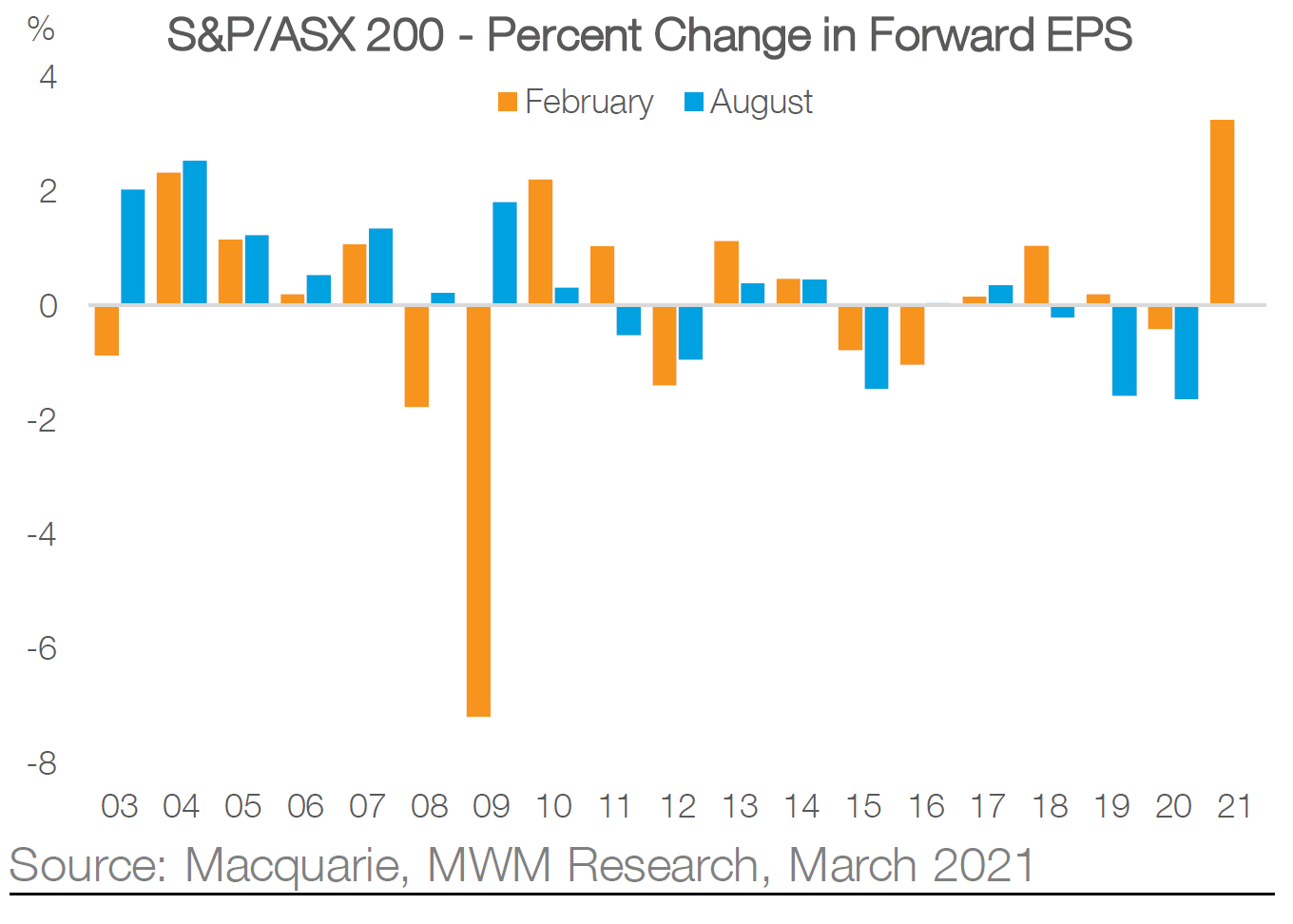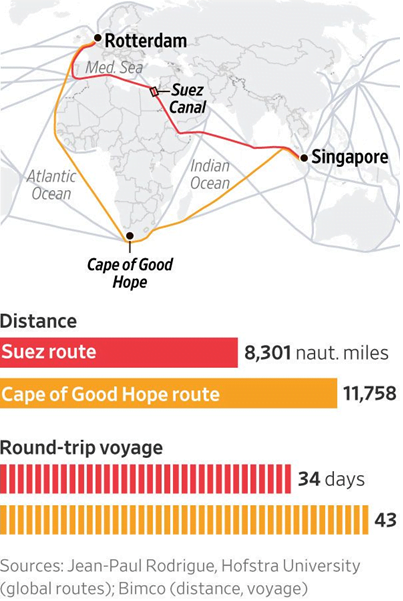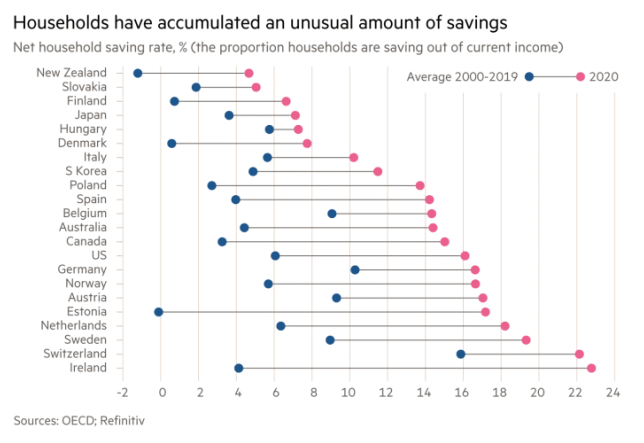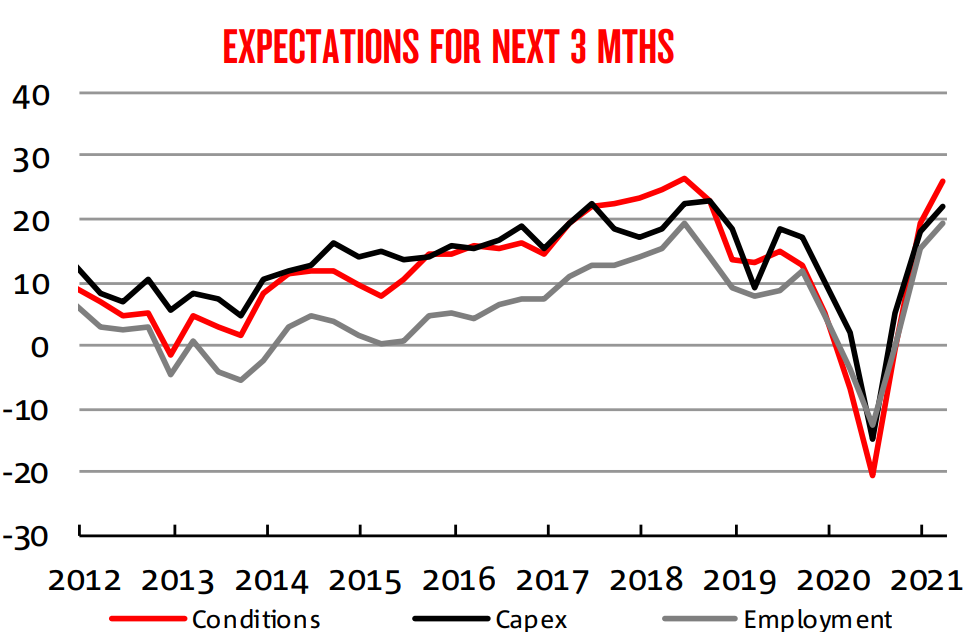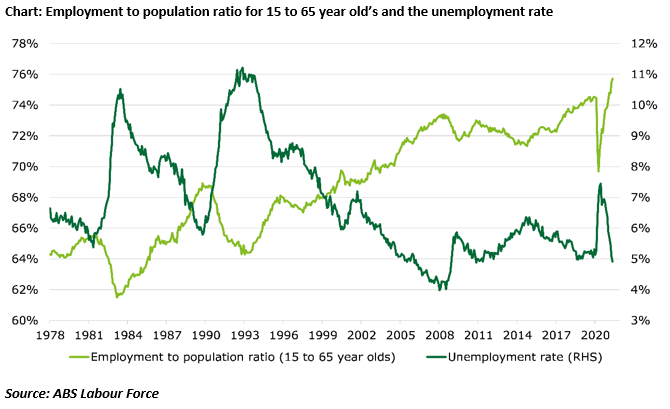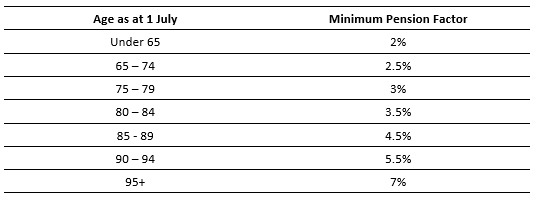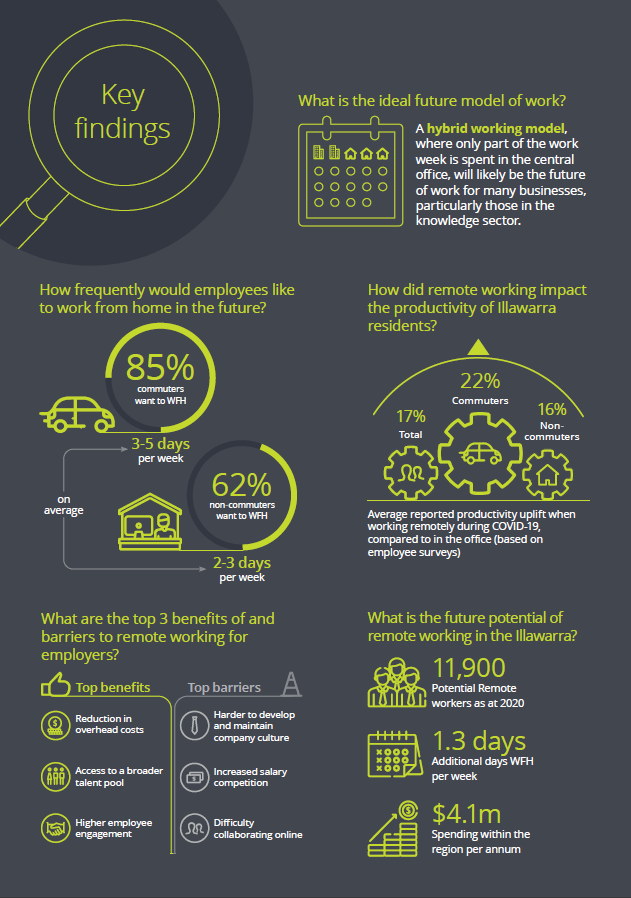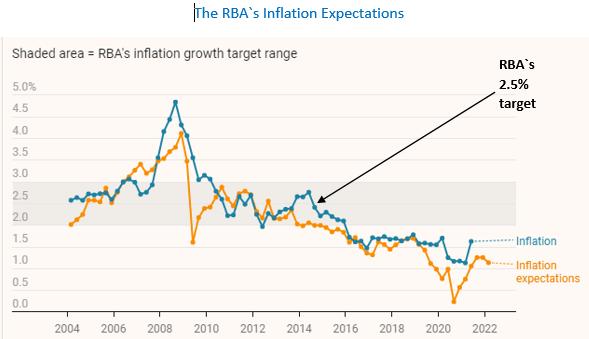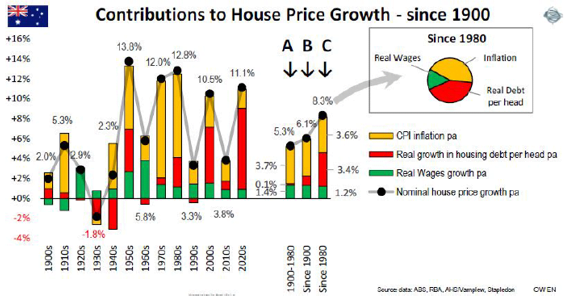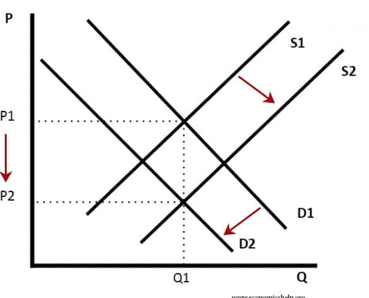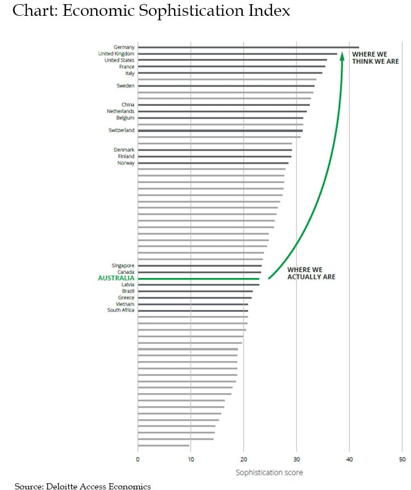The 2021-22 Federal Budget is a balancing act between a better than anticipated deficit ($106 bn), an impending election, and the need to invest in the long term.
Key initiatives include:
- Extension of temporary full expensing and loss-carry back providing immediate deductions for business investment in capital assets
- Introduction of a ‘patent box’ offering tax concessions on income derived from medical and biotech patents
- Tax and investment incentives for the digital economy
- Extension of the low and middle income tax offset
- Child care subsidy increase for families with multiple children
- $17.7 billion over 5 years to reform aged care
- $2.3 billion on mental health infrastructure and programs
- New and extended home ownership programs for first home owners and single parents
It is also a human budget (cynics would say voter focussed), with $17.7 billion dedicated to aged care, more money in the pockets of low income earners, the COVID vaccine rollout, $2 billion for mental health, a women’s economic package including a child care subsidy increase and funding to prevent violence, and a Royal Commission into defence and veteran suicide.
There will also be a lot of money flowing through to the private sector to those that are capable of developing new technologies. Momentum and drive to develop new initiatives is a strong theme and in some circumstances the Government will offset the risk of those initiatives – if you are in the right sectors.
The $1.2 billion digital economy strategy seeks to rewrite Australia’s underlying infrastructure and incentivise business to boldly develop towards a digital future. The program is broad – from upskilling the workforce, the expansion of consumer digital rights, the development of SME digitisation, Government service delivery, to cybersecurity.
Beyond digital, co-funding and seed capital is available to those developing new technologies that reduce emissions, and grow new export markets and jobs in this sector.
Productivity is a key take-out with several measures targeted at encouraging industry to innovate and develop including the extension of full expensing and the loss carry back measures.
If we can assist you to take advantage of any of the Budget measures, or to risk protect your position, please let us know.

As widely predicted, the Low and Middle Income Tax Offset (LMITO) will be extended for another year. The LMITO provides a reduction in tax of up to $1,080 for individuals with a taxable income of up to $126,000 and will be retained for the 2021-22 year.

The tax offset is triggered when a taxpayer lodges their tax return.

The Government will increase the Medicare levy low-income thresholds for singles, families, and seniors and pensioners from 1 July 2020 to take account of recent movements in the CPI so that low-income taxpayers generally continue to be exempt from paying the Medicare levy.

For each dependent child or student, the family income thresholds increase by a further $3,597 instead of the previous amount of $3,533.

Currently, individuals claiming a deduction for self-education expenses sometimes need to reduce the deductible amount by up to $250. The rules in this area are complex as they only apply to self-education expenses that fall within a specific category and certain non-deductible expenses can be offset against the $250 reduction. This reduction will be removed, which should make it easier for individuals to calculate their self-education deductions.

From 1 July 2022 the Government will:
- Increase child care subsidies available to families with more than one child aged five and under in child care, and
- Remove the $10,560 cap on the Child Care Subsidy.
For those families with more than one child in child care, the level of subsidy received will increase by 30% to a maximum subsidy of 95% of fees paid for their second and subsequent children (tapered by income and hours of care).
Under the current system, the maximum child care subsidy payable is 85% of child care fees and it applies at the same rate per child, regardless of how many children a family may have in care.
Why? In October 2020, analysis by the Grattan Institute revealed that mothers lose 80%, 90% and even 100% of their take-home pay from working a fourth or fifth day after the additional childcare costs, clawback of the childcare subsidy, and tax and benefit changes are factored in.
“Unsurprisingly, not many find the option of working for free or close to it particularly attractive. The “1.5 earner” model has become the norm in Australia. And our rates of part-time work for women are third-highest in the OECD.
Childcare costs are the biggest contributor to these “workforce disincentives“. The maximum subsidy is not high enough for low-income families, and the steep taper and annual cap limit incentives to work beyond three days, across the income spectrum,” the report said.

The Government has announced new and expanded programs to assist Australians to buy a home.
2% deposit home loans for single parents

The Government will guarantee 10,000 single parents with dependants to enable them to access a home loan with a deposit as low as 2% under the Family Home Guarantee. Similar to the first home loan deposit scheme, the program will guarantee the additional 18% normally required for a deposit without lenders mortgage insurance.
The Family Home Guarantee is aimed at single parents with dependants, regardless of whether that single parent is a first home buyer or previous owner-occupier. Applicants must be Australian citizens, at least 18 years of age and have an annual taxable income of no more than $125,000.
5% deposit home loans for first home buyers building new homes

The First Home Loan Deposit Scheme will be extended by another 10,000 places from 1 July 2021 to 30 June 2022. Eligible first home buyers can build a new home with a deposit of as little as 5% (lenders criteria apply). The Government guarantees a participating lender up to 15% of the value of the property purchased that is financed by an eligible first home buyer’s home loan. Twenty seven participating lenders offer places under the scheme.
Under the scheme, first home buyers can build or purchase a new home, including newly-constructed dwellings, off-the-plan dwellings, house and land packages, land and a separate contract to build a new home, and can be used in conjunction with other schemes and concessions for first home buyers. Conditions and timeframes apply.
First home saver scheme cap increase

The first home super saver (FHSS) scheme allows you to save money for your first home inside your super fund, enabling you to save faster by accessing the concessional tax treatment of superannuation. You can make voluntary concessional (before-tax) and voluntary non-concessional (after-tax) contributions into your super fund and then apply to release those funds.
Currently under the scheme, participants can release up to $15,000 of the voluntary contributions (and earnings) they have made in a financial year up to a total of $30,000 across all years.
The Government has announced that the current maximum releasable amount of $30,000 will increase to $50,000.
The voluntary contributions made to superannuation are assessed under the applicable contribution caps; there is no separate cap for these amounts.
Amounts withdrawn will be taxed at marginal rates less a 30% offset. Non-concessional contributions made to the FHSS are not taxed.
To be eligible for the scheme, you must be 18 years of age or over, never owned property in Australia, and have not previously applied to release superannuation amounts under the scheme. Eligibility is assessed on an individual basis. This means that couples, siblings or friends can each access their own eligible FHSS contributions to purchase the same property.
The Government has committed an additional $500 million to extend the JobTrainer Fund by a further 163,000 places and extend the program until 31 December 2022. JobTrainer is matched by state and territory governments and provides job seekers, school leavers and young people access to free or low-fee training places in areas of skills shortages.

The Government will provide a full income tax exemption for the pay and allowances of Australian Defence Force (ADF) personnel deployed to Operation Paladin. Operation Paladin is Australia’s contribution to the United Nations Truce Supervision Organisation, with ADF personnel deployed in Israel, Jordan, Syria, Lebanon and Egypt.

Individuals aged 67 to 74 years will be able to make or receive non-concessional or salary sacrifice superannuation contributions without meeting the work test. The contributions are subject to existing contribution caps and include contributions under the bring-forward rule.
Currently, the ‘work test’ requires individuals aged 67 to 74 years to work at least 40 hours over a 30 day period in a financial year to be able to make voluntary contributions (both concessional and non-concessional) to their superannuation, or receive contributions from their spouse.
Personal concessional contributions will remain subject to the ‘work test’ for those aged between 67-74.

The eligibility age to access downsizer contributions will decrease from 65 years of age to 60.
Currently, downsizer contributions enable those over the age of 65 to contribute $300,000 from the proceeds of selling their home to their superannuation fund. These contributions are excluded from the existing age test, work test and the $1.7 million transfer balance threshold (but will not be exempt from your transfer balance cap).
Both members of a couple can take advantage of the concession for the same home. That is, if a couple have joint ownership of a property and meet the other criteria, both people can contribute up to $300,000 ($600,000 per couple).
Downsizer contributions apply to sales of a principal residence owned for the past ten or more years.
Sale proceeds contributed to superannuation under this measure will count towards the Age Pension assets test.

The residency rules for Self Managed Superannuation Funds (SMSFs) and small APRA regulated funds (SAFs) will be relaxed by extending the central control and management test safe harbour from two to five years for SMSFs, and removing the active member test for both fund types.
This change will enable SMSF and SAF members to contribute to their super while temporarily overseas, (as members of large APRA-regulated funds can do).
An SMSF must be considered an Australian Superannuation Fund in order to be a complying superannuation fund and receive tax concessions. If a super fund fails to meet the definition of an Australian Superannuation Fund then it is likely to become a non-complying, if this occurs the fund’s assets and income are taxed at the highest marginal tax rate.
This measure will enable SMSF and SAF members to keep and continue to contribute to their fund while predominantly undertaking overseas work and education opportunities.

Individuals will be able to exit a specified range of legacy retirement products, together with any associated reserves, for a two-year period. This includes market-linked, life-expectancy and lifetime products, but not flexi-pension products or a lifetime product in a large APRA-regulated or public sector defined benefit scheme.
Currently, these products can only be converted into another like product and limits apply to the allocation of any associated reserves without counting towards an individual’s contribution caps. The measure will permit full access to all of the product’s underlying capital, including any reserves, and allow individuals to potentially shift to more contemporary retirement products.
This will be a voluntary measure and not a mandated requirement for those individuals who hold these legacy accounts.
Social security and taxation treatment will not be grandfathered for any new products commenced with commuted funds and the commuted reserves will be taxed as an assessable contribution.
The Government is not proceeding with the measure to extend early release of superannuation to victims of family and domestic violence.
Technical changes will be made to the First Home Super Saver Scheme to reduce errors and streamline applications. These include:
- Increasing the discretion of the Commissioner of Taxation to amend and revoke FHSSS applications
- Allowing individuals to withdraw or amend their applications prior to receiving an FHSSS amount, and allow those who withdraw to re-apply for FHSSS releases in the future
- Allowing the Commissioner of Taxation to return any released FHSSS money to superannuation funds, provided that the money has not yet been released to the individual
- Clarifying that the money returned by the Commissioner of Taxation to superannuation funds is treated as funds’ non-assessable non-exempt income and does not count towards the individual’s contribution caps.

Businesses with an aggregated turnover of less than $5 billion will be able to continue to fully expense the cost of new depreciable assets and the cost of improvements to existing eligible assets in the first year of use. Introduced in the 2020-21 Budget, this measure will enable an asset’s cost to continue to be fully deductible upfront rather than being claimed over the asset’s life, regardless of the cost of the asset. The extension means that the rules can apply to assets that are first used or installed ready for use by 30 June 2023.
Certain expenditure is excluded from this measure, such as improvements to land or buildings that are not treated as plant or as separate depreciating assets in their own right. Expenditure on these improvements would still normally be claimed at 2.5% or 4% per year.
The car limit will continue to place a cap on the deductions that can be claimed for luxury cars.
From 1 July 2023, normal depreciation arrangements will apply and the instant asset write-off threshold for small businesses with turnover of less than $10 million will revert back to $1,000.
Second-hand assets
For businesses with an aggregated turnover under $50 million, full expensing also applies to second-hand assets.
Small business pooling
Small business entities (with aggregated annual turnover of less than $10 million) using the simplified depreciation rules can deduct the full balance of their simplified depreciation pool at the end of the income year while full expensing applies. The provisions which prevent small businesses from re-entering the simplified depreciation regime for five years if they voluntarily leave the system will presumably continue to be suspended.
Opt-out rules
Taxpayers can choose not to apply the temporary full expensing rules to specific assets, although this choice is not currently available to small business entities that choose to apply the simplified depreciation rules for the relevant income year.

Companies with an aggregated turnover of less than $5 billion will be able to carry back losses from the 2019-20, 2020-21, 2021-22 and 2022-23 income years to offset previously taxed profits in the 2018-19, 2019-20, 2020-21 and 2021-22 income years.
Under this measure tax losses can be applied against taxed profits in a previous year, generating a refundable tax offset in the year in which the loss is made. The amount carried back can be no more than the earlier taxed profits, limiting the refund by the company’s tax liabilities in the profit years. Further, the carry back cannot generate a franking account deficit meaning that the refund is further limited by the company’s franking account balance.
The tax refund will be available on election by eligible businesses when they lodge their 2020-21, 2021-22 and 2022-23 tax returns.
Before the measure was introduced in the 2020-21 Budget, companies were required to carry losses forward to offset profits in future years. Companies that do not elect to carry back losses can still carry losses forward as normal.
This measure will interact with the Government’s announcement to extend full expensing of investments in depreciating assets for another year. The new investment will generate significant tax losses in some cases which can then be carried back to generate cash refunds for eligible companies.

Determining whether an individual is a resident of Australia for tax purposes can be complex. The current residency tests for tax purposes can create uncertainty and are often subject to legal action.
The Government will replace the individual tax residency rules with a new, modernised framework. The primary test will be a simple ‘bright line’ test – a person who is physically present in Australia for 183 days or more in any income year will be an Australian tax resident. Individuals who do not meet the primary test will be subject to secondary tests that depend on a combination of physical presence and measurable, objective criteria.
The modernisation of the residency framework is based on the Board of Taxation’s 2019 report Reforming individual tax residency rules – a model for modernisation.

Employee share schemes provide an opportunity for employers to offer employees a stake in the growth of the company by issuing interests such as shares, rights (including options) or other financial products to their employees, usually at a discount.
The Government has moved to simplify employee share schemes and make them more attractive by removing the cessation of employment taxing point for tax-deferred Employee Share Schemes (ESS). Currently, when an employee receives shares or options that are subject to deferred taxation the taxing point is triggered when they cease employment with the company, even if they could still lose the shares or options in future or have not yet exercised the options they have received.
This will mean that under a tax-deferred ESS, where certain criteria are met, employees may continue to defer the taxing point even if they are no longer employed by the company. In broad terms, following this change the deferred taxing point will be the earliest of:
- in the case of shares, when there is no risk of forfeiture and no restrictions on disposal
- in the case of options, when the employee exercises the option and there is no risk of forfeiting the resulting shares and no restriction on disposal
- the maximum period of deferral of 15 years.
Regulatory changes will also be made to reduce red tape where employers do not charge or lend to the employees to whom they offer ESS. Where employers do charge or lend, streamlining requirements will apply for unlisted companies making ESS offers that are valued at up to $30,000 per employee per year.

Currently, employees need to earn $450 per month to be eligible to be paid the superannuation guarantee. This threshold will be removed so all employees will be paid super guarantee regardless of their income earned.
The Retirement Income Review estimated that around 300,000 individuals would receive additional superannuation guarantee payments each month once the threshold is removed.

Income derived from Australian medical and biotechnology patents will be taxed at a concessional effective corporate tax rate of 17% from 1 July 2022 under a new $206m ‘patent box’ tax regime.
Only granted patents, which were applied for after the Budget announcement, will be eligible and development will need to be domestic. That is, the patent box rewards companies to keep their IP within Australia. The preferential tax rate applies to income due to the patent and not from manufacturing, branding or other attributes.
The patent box concept is new to Australia but exists in twenty or so other countries including the UK and France. The Government will follow the OECD’s guidelines on patent boxes to ensure the patent box meets internationally accepted standards, and will consult with the industry on the design.
If effective, this same concept may also be applied to the clean energy sector.

As part of its Digital Economy Strategy package, the Government has committed to new and expanded funding to invest in the growth of digital industries and the adoption of digital technologies by small business.
Investment and tax incentives
The Government has committed to a series of tax incentives to support digital technologies:
Digital games tax offset
A 30% refundable tax offset for eligible businesses that spend a minimum of $500,000 on qualifying Australian games expenditure. The Digital Games Tax Offset will be available from 1 July 2022 to Australian resident companies or foreign resident companies with a permanent establishment in Australia. Industry consultation will commence in mid 2021 to establish the eligibility criteria and definition of qualifying expenditure.
Self-assessment of the effective life of certain intangible assets
The income tax laws will be amended to allow taxpayers to self-assess the effective life of certain intangible assets, rather than being required to use the effective life currently prescribed by statute. The measure applies to assets acquired from 1 July 2023 (after the temporary full expensing regime has concluded) including patents, registered designs, copyrights and in-house software for tax purposes. Taxpayers will be able to bring deductions forward if they self-assess the assets as having a shorter effective life to the statutory life.
Review of venture capital tax incentives
The effectiveness of the existing range of tax incentives designed to attract foreign investment and encourage venture capitalists to invest in early-stage Australian companies will be reviewed to ensure they are producing the intended results. This is code for the Government doesn’t think the money invested is achieving a genuine result and changes are likely to be recommended.
Emerging aviation technologies
The Government has committed $35.7m to support emerging aviation technologies, the bulk of which is committed to the Emerging Aviation Technology Partnerships (EATP) program. Partnering with industry, the program is focussed on:
- growing manufacturing jobs in electric aviation
- connecting regional communities
- digital farming
- boosting regional supply chains
- improving health outcomes for remote Indigenous communities.
and is expected to include electric engines, drones and electric vertical take-off and landing aircraft.
Applications for EATP partners will be sought from local and international industry through a competitive application process in late 2021.
Artificial intelligence development
A package of measures to oversee and develop Australia’s use and integration of artificial intelligence (AI) including:
National Al centre
A new national AI centre to create the foundation for Australia’s AI and digital ecosystem within the CSIRO’s Data61. The centre will support projects that lift AI capability, provide a “front door” or SMEs looking for talent, and provide a central coordination for strategically aligned AI projects. Four Digital Capability Centres will be appointed through a competitive process focussing on specific applications of AI, such as robotics or AI assisted manufacturing. These Centres will provide SMEs with connections to AI equipment, tools and research, access to advice and training to help SMEs confidently adopt AI technologies, and links with the required AI expertise to identify business needs and connect them to leading researchers.
AI grant funding
Two grant funding programs (one national and one specifically for regional initiatives) for business to pilot AI projects that address key national challenges. Grantees will retain the intellectual property of their solution.
Expansion of small business digital support services
The Government has committed to:
- A further $12.7m for the Digital Solutions – Australian Small Business Advisory Services Program that provides small businesses with access to digital solutions advisers to work with them to expand their use of digital technology. The Digital Solutions Program will pilot a program for the not-for-profit sector.
- $15.3 m has been dedicated to drive electronic invoicing through the business community by working with payment providers, supply chain pilots, and education campaigns (E-invoicing will be mandatory for Government by July 2022). No direct incentives for adoption.

The Government will provide $1.6 billion over ten years from 2021-22 (including $761.9 million over four years from 2021-22) to incentivise private investment in technologies identified in the Government’s Technology Investment Roadmap and Low Emissions Technology Statements. Funding includes:
- Creation of a technology co-investment facility that supports the development of regional hydrogen hubs, carbon capture, use and storage technologies, very low cost soil carbon measurement and new agricultural feed technologies, a high-integrity carbon offset scheme in the Indo-Pacific region, and support the implementation of the Technology Investment Roadmap and Low Emissions Technology Statements
- Establish the below baseline crediting mechanism recommended by the King Review and help realise abatement opportunities in large industrial facilities
- Support for Australian businesses and supply chains to reduce their energy costs and improve productivity through the uptake of more energy efficient industrial equipment and business practices
- Early stage seed capital financing function within the Australian Renewable Energy Agency (ARENA).
In the 2020-21 Budget, the Government announced that the corporate tax residency rules would be amended to address the uncertainty that currently exists when trying to determine the residency status of a company that has been incorporated overseas.
These amendments have not yet been made, but the Government has announced that it will also consult on broadening the scope of the amendments to trusts and corporate limited partnerships as part of the consultation process dealing with the company residency rules.
The Junior Minerals Exploration Incentive program provides a tax incentive for investment in junior minerals exploration companies raising capital to fund greenfields exploration activity.
Eligible companies are able to create exploration credits by giving up a portion of their tax losses relating to exploration expenditure, which can then be distributed to new investors as a refundable tax offset or a franking credit.
The program has been extended for four years from 1 July 2021 to 30 June 2025.
The Government will also make minor legislative amendments to allow unused exploration credits to be redistributed a year earlier than under current settings.
Tax relief for brewers and distillers – annual cap increased to $350k

From 1 July 2021, eligible brewers and distillers will be able to receive a full remission of any excise they pay, up to an annual cap of $350,000. Currently, eligible brewers and distillers are entitled to a refund of 60% of the excise they pay, up to an annual cap of $100,000.
The tax relief will align the benefit available under the Excise Refund Scheme for brewers and distillers with the Wine Equalisation Tax (WET) Producer Rebate.
Tax exemption for storm and flood grants for SMEs and primary producers

Qualifying grants made to primary producers and small businesses affected by the storms and floods will be non-assessable non-exempt income for tax purposes.
Qualifying grants are Category D grants provided under the Disaster Recovery Funding Arrangements 2018, where those grants relate to the storms and floods in Australia that occurred due to rainfall events between 19 February 2021 and 31 March 2021. These include small business recovery grants of up to $50,000 and primary producer recovery grants of up to $75,000.
Student visa holders will temporarily be able to work more than 40 hours per fortnight in key sectors:
- Tourism and hospitality – student visa holders will be able to work more than 40 hours per fortnight, as long as they are employed in the tourism or hospitality sectors.
- Agricultural sector – From 5 January 2021, work limitation conditions placed on student visa holders were temporarily lifted to allow these visa holders to work more than 40 hours per fortnight if they are employed in the agriculture sector. The Government has removed the requirement for applicants for the Temporary Activity visa (subclass 408) to demonstrate their attempts to depart Australia if they intend to undertake agricultural work. The period in which a temporary visa holder can apply for the Temporary Activity visa has also been extended from 28 days prior to visa expiry to 90 days prior to visa expiry.

The Government is implementing a series of measures to assist tertiary and international education providers to help mitigate some of the impact of COVID-19. Funding includes:
- $26.1 million over four years from 2021-22 to assist non-university higher education providers to attract more domestic students through offering 5,000 additional short course places in 2021
- $9.4 million in 2021-22 to provide grants of up to $150,000 to eligible higher education and English language providers to support innovative online and offshore education delivery models
- extending existing FEE-HELP loan fee exemption by six months to 31 December 2021
A range of Government fees and regulatory charges have also been either revised or postponed.

The Government will provide $222.9 million over two years from 2020-21 to continue to support the arts sector through the impacts of COVID-19.
Funding includes:
- Expansion of the Restart Investment to Sustain and Expand Fund to provide financial support to support events or productions
- Extension of the Temporary Interruption Fund for 2021-22
- A program of support for independent cinemas
Producer Tax Offset rate holds at 40% for 2021-21
The Producer Tax Offset rate will stay at 40% for feature films with a theatrical release. The 2020-21 Budget had intended to reduce the rate to 30%.





Digital Skills Cadetship Trials – working with industry, the Government will trial 4 to 6 month cadetships for digital careers comprising formal training with on-the-job learning.
Expansion of Cyber Security Skills Partnership Innovation Fund – Additional funding for education providers that improve the quality or availability of cyber security professionals in Australia.
Next General Graduates Programs – AI & next gen technologies – a competitive national scholarship program cofounded with universities and industry:
- the Next Generation Artificial Intelligence Graduates Program to attract and train up to 234 home-grown, job-ready AI specialists through competitive national scholarships
- the Next Generation Emerging Technology Graduates Program to attract and train up to an additional 234 home-grown, job-ready specialists in other emerging technologies, such as robotics, cyber security, quantum computing, blockchain and data through competitive national scholarships.


Networks and cybersecurity – over $50m has been committed to strengthen the rollout of 5G and 6G mobile networks, develop a National Data Security Action Plan, improve the resilience of Government infrastructure using Cyber Hubs, and $16.4m to improve mobile connectivity in bushfire peri-urban prone areas.
$500m on myGov and My Health Record – the Government will overhaul myGov – now the primary access point for Government services, and My Health Record – adding support for COVID-19 testing and vaccinations, connecting Residential Aged Care Facilities and connecting specialists in private practice and delivering improved telehealth, emerging virtual healthcare initiatives and digitised support across all stages of healthcare.
Data security and rights – $113m to delivering Australia’s first data strategy to bring data management and regulation up to speed with technology, expansion of data rights to energy industry (launched in banking in 2021), and the development of a 3D Australian ‘digital atlas’.

Measures include:
- $400.1 million to strengthen biosecurity;
- $32.1 million to extend opportunities to reward farmers for the stewardship of their land;
- $29.8 million to grow the agricultural workforce;
- $15.0 million to improve trade and market access; and
- $129.8 million to deliver a National Soils Strategy.
The Government has committed to $58.6 million to support key gas infrastructure projects and unlock new gas supply.
The Government will provide $1.9 billion over five years from 2020-21 to distribute and administer COVID-19 vaccines to residents of Australia.
The Government has committed $998.1 million over four years for initiatives to reduce, and support the victims of Family, Domestic and Sexual Violence (FDSV) against women and children. Initiatives include a new National Partnership with the states and territories to expand the funding of frontline FDSV support services, $5,000 grants for women fleeing domestic violence, programs to support refugee and migrant women, programs to support Aboriginal and Torres Strait Islander women and children who have experienced or are experiencing family violence, along with a range of prevention campaigns.
Funding has also been provided for vulnerable women and children accessing the legal system and family support services.
As previously announced, the Government has committed a $17.7 billion whole-of-government response to the recommendations of the Royal Commission into Aged Care Quality and Safety to improve safety and quality and the availability of aged care services. This includes:
- $6.5 billion will be spent over four years to release 80,000 additional home care packages over two years from 2021-22 – bringing the total number to 275,598 by June 2023.
- Just under $700 million to improve access and infrastructure
- $783 million to provide greater access to respite care services and payments to support carers
- $272.5 million for dedicated face to face support services to navigate the aged care system
- $365.7 million to support health care within aged care facilities
- $200 million for a new rating system of aged care providers
- $3.9 billion to increase front line care
- $3.2 billion to support aged care providers through a new Government-funded Basic Daily Fee supplement of $10 per resident per day, while continuing the 30% increase in the homelessness and viability supplements
- $216.7 million to upskill the workforce and enhance nurse leadership and clinical skills through additional nursing scholarships and places in the Aged Care Transition to Practice Program
The $2 billion National Mental Health and Suicide Prevention Plan funds a range of initiatives including the enhancement and expansion of digital mental health services, universal aftercare for those who have made a suicide attempt, and a network of Head of Health adult mental health centres and satellites to provide coordinated multi-disciplinary care.
The Government has committed to $174.2 million over two years from 2021-22 for a Royal Commission into Defence and Veteran Suicide.
A new national agency, the National Recovery and Resilience Agency will be created to support local communities during the relief and recovery phases following major disasters, and provide advice on policies and programs to mitigate the impact of future major disaster events. $600m will be invested in a new program of disaster preparation and mitigation, managed by the new agency.
‘Shovel ready’ projects are high on the Government’s agenda.
New South Wales
Key projects to be funded include:
Roads
- $2.03 billion for the Great Western Highway Upgrade – Katoomba to Lithgow – Construction of East and West Sections
- $400 million for the Princes Highway Corridor – Jervis Bay Road to Sussex Inlet Road – Stage 1
- $240 million for the Mount Ousley Interchange
- $100 million for the Princes Highway Corridor – Jervis Bay Road Intersection
- $87.5 million for M5 Motorway – Moorebank Avenue-Hume Highway Intersection Upgrade
- $52.8 million for Manns Road – Intersection Upgrades at Narara Creek Road and Stockyard Place; and
- $48 million for Pacific Highway – Harrington Road Intersection Upgrade, Coopernook.
Infrastructure
- $66 million – Newcastle airport upgrade to widen the runway to accommodate longer range domestic and international passenger services. The upgrade is expected to complete in 2023. More.
Victoria
Key projects to be funded include:
- $2 billion for initial investment in a new Melbourne Intermodal Terminal;
- An additional $307 million for the Pakenham Roads Upgrade;
- An additional $203.4 million for the Monash Roads Upgrade;
- An additional $20 million for the Green Triangle and $15 million for the Melbourne to Mildura Roads of Strategic Importance corridors;
- An additional $56.8 million for the Hall Road Upgrade;
- An additional $30.4 million for the Western Port Highway Upgrade;
- $17.5 million for the Dairy Supply Chain Road Upgrades; and
- $10 million for the Mallacoota-Genoa Road Upgrade.
Queensland
Key projects to be funded include:
- $400 million for the Inland Freight Route (Mungindi to Charters Towers) Upgrades
- An additional $400 million for Bruce Highway Upgrades
- $240 million for the Cairns Western Arterial Road Duplication
- $178.1 million for the Gold Coast Rail Line Capacity Improvement (Kuraby to Beenleigh) – Preconstruction
- $160 million for the Mooloolah River Interchange Upgrade (Packages 1 and 2)
- An additional $126.6 million for Gold Coast Light Rail – Stage 3
- $35.3 million for the Maryborough-Hervey Bay Road and Pialba-Burrum Heads Road Intersection Upgrade; and
- $10 million for the Caboolture – Bribie Island Road (Hickey Road-King John Creek) Upgrade.
Northern Territory
New projects to be funded include:
- $300k Development Study for a Proposed Tennant Creek Multimodal Facility and Rail Terminal
- $150m Northern Territory National Network Highway Upgrades (Phase 2)
- $173.6m Northern Territory Gas Industry Roads Upgrades
South Australia
Key projects to be funded include:
- $2.6 billion allocation of funding for the North-South Corridor – Darlington to Anzac Highway;
- $161.6 million for the Truro Bypass;
- $148 million for the Augusta Highway Duplication Stage 2;
- An additional $64 million for the Strzelecki Track Upgrade – Sealing;
- An additional $60 million for the Gawler Rail Line Electrification;
- $48 million for the Heysen Tunnel Refit and Upgrade – Stage 2
- An additional $27.6 million for the Overpass at Port Wakefield and Township Duplication;
- $32 million for the Kangaroo Island Road Safety and Bushfire Resilience Package, and
- $22.5 million for the Marion Road and Sir Donald Bradman Drive Intersection Upgrade
Tasmania
Key projects to be funded include:
- $80 million for the Tasmanian Roads Package – Bass Highway Safety and Freight Efficiency Upgrades Package – Future Priorities;
- $48 million for the Algona Road Grade Separated Interchange and Duplication of the Kingston Bypass;
- $44 million for the Rokeby Road – South Arm Road Upgrades;
- $37.8 million for the Midland Highway Upgrade – Campbell Town North (Campbell Town to Epping Forest);
- $36.4 million for the Midland Highway Upgrade – Oatlands (Jericho to South of York Plains);
- $35.7 million for the Midland Highway Upgrade – Ross (Mona Vale Road to Campbell Town);
- An additional $24 million for the Port of Burnie Shiploader Upgrade; and
- $13.2 million for the Huon Link Road.
Western Australia
Key projects to be funded include:
- $347.5 million for METRONET: Hamilton Street-Wharf Street Grade Separations and Elevation of Associated Stations, including Queens Park Station and Cannington Station and an enhanced METRONET Byford Rail Extension project, with new grade separated rail crossing at Armadale Road and an elevated station at Armadale
- $200 million for the Great Eastern Highway Upgrades – Coates Gully, Walgoolan to Southern Cross and Ghooli to Benari
- $160 million for the WA Agricultural Supply Chain Improvements – Package 1
- $112.5 million for the Reid Highway – Altone Road and Daviot Road-Drumpellier Drive – Grade-separated intersections
- $85 million for the Perth Airport Precinct – Northern Access
- $64 million for the Toodyay Road Upgrade – Dryandra to Toodyay
- $55 million for the Mandurah Estuary Bridge Duplication, and
- $31.5 million towards the METRONET High Capacity Signalling project
ACT
New projects to be funded include:
- $2.5m Beltana Road Improvements
- $132.5m Canberra Light Rail – Stage 2A
- $26.5m William Hovell Drive Duplication

The deficit, thanks in part to surging iron ore prices, is lower than anticipated in the 2020-21 Federal Budget at $161 billion in 2020-21, a $52.7 billion improvement to estimates. The underlying cash balance is expected to be a deficit of $106.6 billion in 2021-22 and continue to improve over the forward estimates to a deficit of $57 billion in 2024-25. While the deficit is large, it did its job.
Real GDP grew strongly over the latter half of 2020, marking the first time on record when Australia has experienced two consecutive quarters of economic growth above 3% – output is expected to have exceeded its pre-pandemic level in the March quarter of 2021. Real GDP is forecast to grow by 1.25% in 2020-21, by 4.25% in 2021-22 and 2.5% in 2022-23. After falling by 2.5% in 2020, real GDP is expected to grow by 5.25% in 2021, and by 2.75% in 2022.

- A population-wide vaccination program is likely to be in place by the end of 2021.
- During 2021, localised outbreaks of COVID-19 are assumed to occur but are effectively contained.
- General social distancing restrictions and hygiene practices will continue until medical advice recommends removing them.
- No extended or sustained state border restrictions in place over the forecast period.
- A gradual return of temporary and permanent migrants from mid-2022. Small phased programs for international students will commence in late 2021 and gradually increase from 2022. The rate of international arrivals will continue to be constrained by state and territory quarantine caps over 2021 and the first half of 2022, with the exception of passengers from Safe Travel Zones.
- Inbound and outbound international travel is expected to remain low through to mid-2022, after which a gradual recovery in international tourism is assumed to occur.


Source: Budget 2021-22
